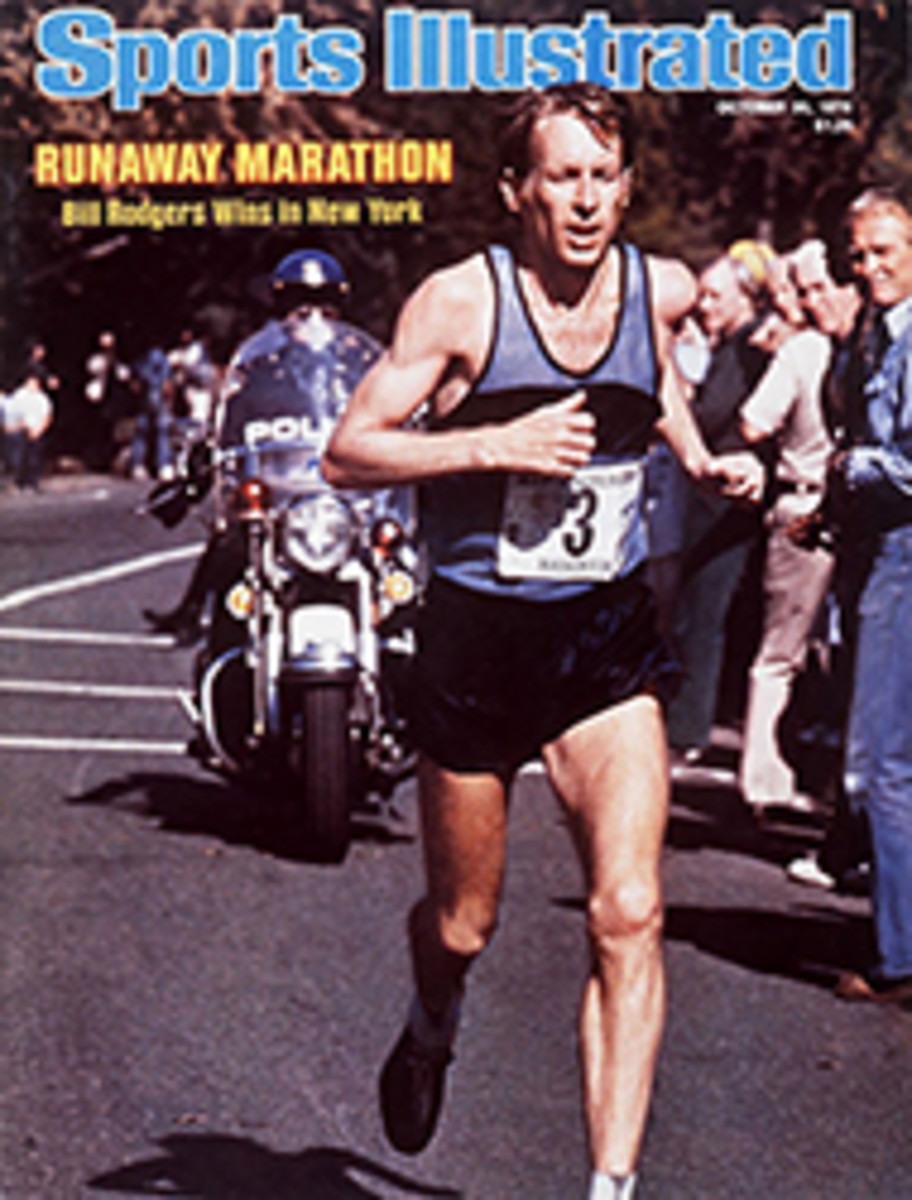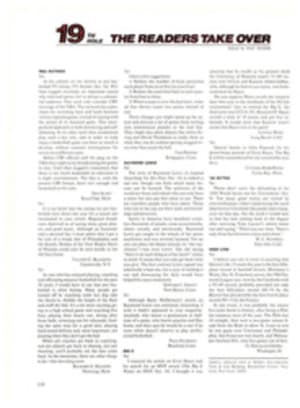
FOR 91 YEARS THE FOXBURG COUNTRY CLUB HAS BEEN A GEM IN THE ROUGH
Tucked away in the rolling hills of western Pennsylvania is a tidy little golf course billed as the oldest in continuous use in the United States. It's the Country Club at Foxburg (pop. 250 and declining), about 60 miles north of Pittsburgh as the Dunlop 65 flies.
Play began at Foxburg in the summer of 1887, according to affidavits from half a dozen men, long since gone to the golfer's final reward, who swore in 1947 that they were there. Nothwithstanding competing claims by St. Andrews of Yonkers, N.Y. and several other old clubs, in 1971 the U.S. House of Representatives (with the Senate concurring) adopted a resolution that formally recognized the Foxburg Country Club as the oldest.
Golf's early arrival in Foxburg was an accident of geography. The town was the site of the summer estate of Joseph Mickle Fox, scion of a land-and oil-rich Philadelphia family. In 1884 Fox went to Great Britain for a series of cricket matches and tried his hand at golf at the Old Course in St. Andrews in Scotland. He enjoyed the game and upon returning home, he had an eight-hole course laid out on the lawn and meadows of his estate and invited well-connected villagers to play. The game became quite popular, and within a couple of years a more spacious layout was needed. Fox, whose domain included most of the land around the town, generously provided 50 acres rent free.
Naturally, Fox became the first president when the Foxburg Country Club was organized in June 1887. The course is now owned by a corporation of the club's 225 members, but the public is welcome from mid-April well into October.
Local legend has it that Fox tried to pattern the course after the Old Course. If so, he was signally unsuccessful. "He may have tried to have the same kind of holes," says Foxburg course superintendent Robert Klingensmith. "The bunkers are reminiscent of that kind of construction. But as a whole it isn't much like the Old Course."
For the weekend golfer, the nine-hole layout is well worth the four-mile detour off Interstate 80 at St. Petersburg Exit 6. At only 2,576 yards, the Foxburg course would not oblige Jack Nicklaus or Tom Watson to break a sweat, but it does challenge the duffer. Two holes are guarded by bunkers, the No. 3 by a pair of monsters directly in front of the green.
Foxburg is built on a gently sloping hillside, so play runs uphill and downhill most of the way. The fairways and greens are immaculately groomed, and small groves of oak, along with a scattering of sycamores, maples, dogwood, sumac and nut trees, dot the course. An abandoned spur line of the Baltimore & Ohio railroad curves in front of the 5th and 7th greens as well as the 6th and 8th tees. Until only a decade ago, freight trains crept through the grounds, presenting an extra hazard, both to shot-making and to safety. Once a hard-of-hearing golfer, deeply intent on her game, was gently nudged aside by a locomotive's cowcatcher.
At each tee there is a venerable tee box—a 3½-by-1½-foot stone container with compartments designed to hold water and sand, a leftover from the days when golfers shaped their tees from damp sand. Having outlived their usefulness but not their charm, the tee boxes are now planted with petunias, marigolds and anemones.
Although a few of the holes have been renumbered since 1887, the first five look much as they did when Foxburg opened. The last four holes were added the following year. In the earliest days, quart tomato cans were used for holes. The greens were sand, and after holing out a golfer was required to brush the sand smooth with a burlap bag nailed to a long pole. The first groundkeeper was a villager named John Dunkle, who earned $15 a year for scything the fairways.
Foxburg's clubhouse is a picturesque log house, one of seven lining the drive into the grounds. Behind it, over a heavily wooded declivity, is a spectacular view of the Allegheny River 300 feet below. Prompted no doubt by imperiled fishermen, the club's poet laureate has posted the following notice at the most inviting spot: "The urge is great to hit the ball,/ To see it fly,/ To watch it fall./ Cease and desist this childish whim;/ Just dream about what might have been./ Do not hit balls across the river."
The second floor of the clubhouse is the temporary home of the American Golf Hall of Fame Museum and Library. (A more celebrated museum is at Golf House in Far Hills, N.J.) Valuable golfing memorabilia, including clubs and balls from the 17th and 18th centuries, are on display, as well as six generations of McEwan clubs, starting with James in 1770 and ending with Peter in 1930. There are also name plaques honoring the 51 players inducted so far into the Hall of Fame, and for the less serious-minded there is Joe Kirkwood's 21-club collection. The permanent site for the Hall is now just a steel skeleton in a weedy field at the edge of town. Last July construction was delayed because of a lack of funding. Next summer, if funds are forthcoming, the building will be finished, and the new Hall of Fame Museum and Library will be open for visitors.
St. Andrews it's not. But for its historical associations and pleasant aspect, the Foxburg Country Club is a small treasure in the backwoods of Pennsylvania.

